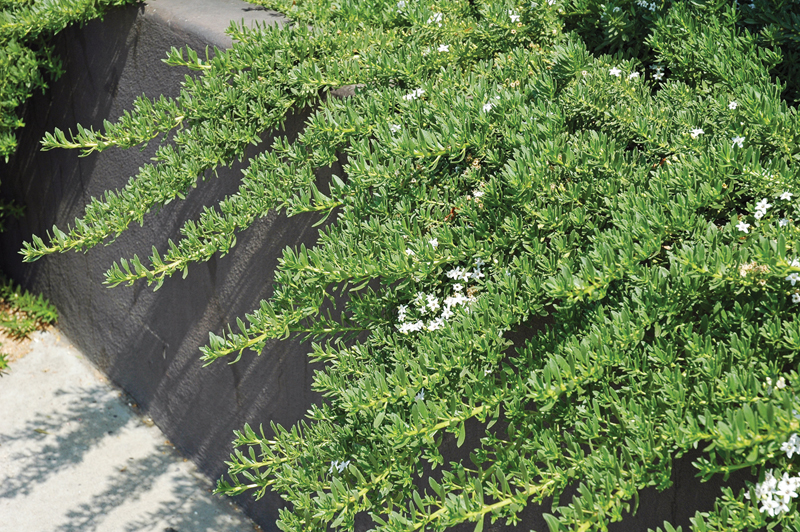Banish your lawn and create a new, water-wise landscape

 CONTRA COSTA COUNTY, CA (June 22, 2022) — There has been another explosion of interest at the nursery from folks considering removing their lawns and installing water-wise landscapes.
CONTRA COSTA COUNTY, CA (June 22, 2022) — There has been another explosion of interest at the nursery from folks considering removing their lawns and installing water-wise landscapes.
Many are curious to see drought-tolerant plants, shrubs and trees. They are also seeking design ideas.
There are three approaches to removing your lawn. The fastest is by way of sod-cutter.
This may sound good, but it’s expensive and labor-intensive. Equipment rental and dump fees will cost you, and handling and transporting the heavy sod rolls is hard work.
Another approach is to stop watering the grass, letting it dry out and start to die. As the grass dries, spray concentrated herbicide like Remuda to kill the existing turf. Once it’s dead, use a pick to loosen clumps of grass and thatch. You’ll need to make a trip to the dump for disposal. After spraying an herbicide, wait at least 30 days before planting.
Some may be interested in sheet mulching to get rid of their lawns. It’s perfect for those who do not want to install a new landscape until late autumn or early winter. Sheet mulching requires layering nitrogen (aged compost and manure) and carbon (newspaper and straw) on top of existing grass. It creates wonderful, rich soil for happy plants.
Sheet mulching is a forgiving process. Many websites and experts have different recipes options.
Time to get planting
There’s a vast selection of drought-tolerant plants to contemplate. Consider foundation plants such as trees and evergreens first in order to support the overall look of the landscape. Easy-to-find and drought-tolerant trees to think about are crape myrtles, smoke bushes, Desert Palo Verde, Arbutus Marina, fruitless olive and Western redbuds.
Drought-tolerant evergreen shrubs for your water-wise landscape include ceanothus, cistus, Manzanita Howard McMinn, grevillea and leucadendron. Ornamental grass-like plants such as lomandra and phormium can also be considered foundation plants. Or look for desert type foundation plants like hesperaloe, aloe, agave, mangave and yucca.
Once you have your foundation plants, it’s time to think about accessory plants and groundcovers. Drought-tolerant accessory plants to consider are many of the salvias and sages, Moonshine Yarrow, dwarf lavender, coreopsis, lantana, daylilies and sedum.
Use accessory plants to accent foundation installations. For example, if you are planting cistus, which blooms in spring, it would be nice for the landscape to include a summer-blooming lantana as a companion installation.
Groundcovers are also important in a lawn-less landscape. Some favorite drought-tolerant groundcovers to consider are myoporum, manzanita, dymondia, thyme, gazania, correa and grevillea.
Design approaches
Make sure your landscape design fulfills the needs of the area. A blank area of walls needs some height planted nearby. Retaining walls should have cascading plant material. Gates need walkways. Highlight existing trees and accent property lines.
Consider building a mound or berm if your landscape is flat. Layer plant material from small to large depending on how the area appears.
Check drip system irrigation regularly. Delivering water to plant material by way of drip is water-wise, however, plants suffer quickly if drips get clogged or disconnected.
Go out and say hi to your installations. Check on your plants as new installations will need additional water. Keep a watering can handy to help establish your new installations.
When folks change lawns to gardens, the trees within the property often suffer from a lack of water and can die. Please adjust your new watering to include existing trees.
Contact Nicole with questions or comments by email at gardengirl94517@yahoo.com

Nicole Hackett
Nicole is the Garden Girl at R&M Pool, Patio, Gifts and Garden. You can contact her with questions or comments by email at gardengirl94517@yahoo.com
